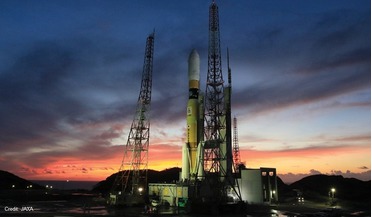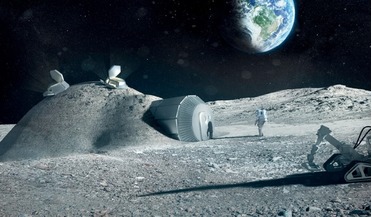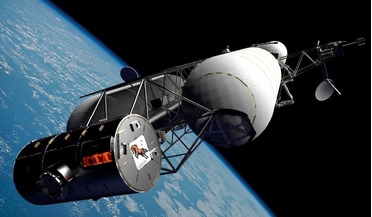 October 2015
Japan’s H-IIA rocket: beautiful, accurate, and on-time
October 2015
Japan’s H-IIA rocket: beautiful, accurate, and on-time
... sequence is therefore simpler than a two-stage combustion cycle, as well as giving a robust response to variations in the oxygen/hydrogen mixture ratio. The upgraded H-IIA rocket undergoes thermal vacuum testing ahead of its launch in autumn 2015...
 April 2017
Surviving radiation for space colonisation
April 2017
Surviving radiation for space colonisation
...radiation. Microwaves have more energy and can cause hydrogen atoms to speed up, increasing temperature. Infrared ...solar radiation and solar wind. A proton is simply a hydrogen nucleus. Hydrogen can have other isotopes that have a proton and a neutron...
 November 2017
Radiation protection for space colonists and travellers
November 2017
Radiation protection for space colonists and travellers
...A thicker metal shield is more effective at stopping photonic radiation, especially when materials that have a high concentration of hydrogen atoms, such as water or plastic is layered with the metal as is the case with modern spacecraft. This raises...
 February 2020
Climate change and spaceports – a difficult balance
February 2020
Climate change and spaceports – a difficult balance
... dramatically improved; because we have a spaceport using craft fuelled in part by hydrogen, we have created a hydrogen economy using renewables to create that hydrogen (and with it a distribution network throughout the county and beyond). Meanwhile...
 August 2020
Scorpion – a study of the possible
August 2020
Scorpion – a study of the possible
...NERVA engine produced double the effective exhaust velocity of a hydrogen/oxygen chemical engine, the impact on the overall system ... using the Scorpion’s Serpent engines and a specialised hydrogen and oxygen lunar lander using in situ oxygen produced...
 March 2022
Space travel and environmental sustainability
March 2022
Space travel and environmental sustainability
... 1980s. The current iteration of this design, Skylon D1, under development at Reaction Engines in the UK, requires 77 tonnes of liquid hydrogen fuel to carry a 15-tonne payload module into orbit. Optimised for passengers, the 200 cubic metre volume...